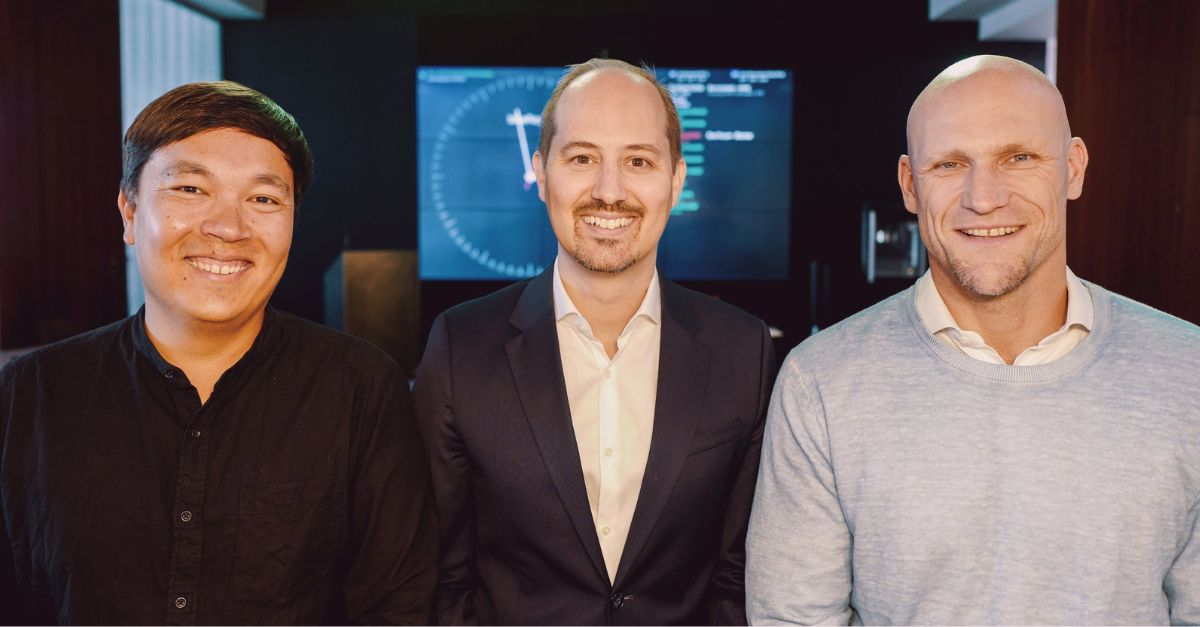Customer Journey 3.0: Limits and solutions
Ever thought about how many steps are needed to get a customer in today's B2B world? Is there a special number of times we should reach out to make a sale? And, how can we make our B2B marketing better?
Thanks to new technologies using AI, some of our old ways of thinking are changing. Let's look closer at the customer journey, see where we might be going wrong, and find ways to improve it.
Listen to the podcast:
Navigating the Extremes of Customer Journeys
Understanding a customer's journey is like having a map to their thoughts and decisions. But, finding the right strategy for this journey isn't always easy.
One-size-filts-all customer Journey
Many businesses use the “one-size-fits-all” method. It's like trying to make everyone wear the same size shoes. It seems simple, but it often doesn't work well. Why? Because everyone is different. Customers have their needs and likes. Trying to make them all follow the same path can lead to problems and missed sales chances.
Ultra-cusomised customer journey
On the other hand, some businesses try to plan for every little detail. Think of it as creating a super-long list of steps for the customer, or having so many choices that it's hard to decide which way to go. The idea behind this is good: trying to meet every customer's exact needs. But often, this just makes things too confusing. Too many options can make customers unsure of what to do.
The key takeaway?
Finding a middle ground is important. It's good to think about what different customers might want, but we also have to keep things simple and easy to follow. By doing this, we can give our customers a better experience.
Identifying the Blind Spot in the Customer Journey
The customer journey is like a road that potential clients walk on, and usually, businesses see two main types of people on this road:
- Cold Leads: Think of these as newcomers. They're just starting out, not really sure of what they're looking for, and might not know much about your company or what you offer.
- Hot Leads: These folks are almost at their destination. They know what problem they have and are looking around, trying to decide the best way to solve it.
Then, there's a group in the middle, which forms a huge blind spot. They're not total beginners, but they're not experts either. This middle group is often overlooked, even though they represent 95% of the target market(!)
The tricky part with this middle group is figuring out exactly where they are on their journey. They know a bit more than the newcomers, but aren't ready to decide like the experts. Because everyone in this group is a bit different, it's hard to treat them all the same. That's why more and more businesses are trying to make special customer journeys for each buyer, based on what they need.
3 Ingredients For Effective Outbound Marketing Journeys
Getting the Best Data with AI
Good results in business start with understanding your customers. First, think about your Ideal Customer (the kind of customer you really want).
After you list down the criteria for your ideal customers and source a few thousand of them, make sure their details are right.
For example, check that the extracted information is still valid: is the person still working at the company? This process is commonly known as Lead Research. If you skip it, you risk damaging the deliverability of your our cold email sequences will most likely land in ghosted inboxes or not land at all but bounce. Next, make sure to gather enough information about each contact to later craft highly personalised emails. This step is referred as Lead Enrichment.
There are many tools out there to help with Lead Research and Lead Enrichment. Apollo and dropcontact are two good choices. They help you find and double-check customer details. Some of these tools can even find lookalike audiences. In other words, they will find a list of contacts that resemble your current customer base.
Using AI to Start Conversations
When you have a big list of contacts to reach out to, AI can help make the first move. It can look at things like someone's job on LinkedIn or what their company does and come up with a special message just for them. This is called Hyper-Personalisation.
For example:
- "Hey Marc, I saw you've been a co-founder many times and are an expert in Marketing Automation and AI. That's really cool!"
- "Hi Valentin, I checked out your LinkedIn and saw you've started companies like Trekksoft and Aioma and led product management. That's awesome!"
Address Pain Points and Show You Can Help
After a strong opener, you can jump right into what they might be dealing with and share something helpful.
- "Marc, being a CEO of a new company, you might be looking for more customers. We at XYZ help companies like yours find the right people to sell to. We made a video about it that you might like. [Watch it here]."
- "Valentin, as a CPO, you probably want your developer team to do the best they can. We've helped many companies improve their teams. We wrote a book with tips about it. [Read it here]."
Adaptive Follow-ups
You've sent that first cold email – good job! But that's just the beginning. The next step? Plan a sequence of 5-7 more emails that changes depending on your prospects' interactions. It's like having a chat and changing what you say based on their reactions. We refer to this process as building your lead automation machine.
If you can incorporate an interactive benchmark or a short survey in your emails, you’ll supercharge your lead automation model. Here's why:
- Gathering Information: You learn directly and quickly from your prospects. It's like seeing what they're thinking.
- Starting the Chat: It helps to start conversations easily. Think of your cold email like a friendly chat over coffee. First, you say "hello," mention a few things you've done (so they know you have experience), and then ask what they need.
People are all different. Some might reply after your first email, while others might wait until your last email. That's okay! The key is to see these patterns and act on them. This is referred to as Lead Qualification. If someone seems interested, talk to them. If they seem ready to buy, introduce them to your sales team.
The best part of including interactive benchmarks or surveys? Both you and your prospect benefit. You understand them better, and they see where they are in the business world, with some helpful tips. It's like sharing useful information, helping both sides.
Here's a tip:
People don't like pushy sales. It's like getting a shirt that's the same size for everyone – it doesn't fit all. Sales is more like finding the right match. You need to understand your prospect, connect with them, and build trust. That's how you build strong, lasting relationships.
Blending Outbound and Inbound Marketing: A Recipe for Success
Think of inbound and outbound marketing like two sides of a coin. Different, but they're both after one thing: great content. With inbound marketing (sometimes known as demand generation), the goal is to pull in potential clients using standout content. On the flip side, outbound marketing still relies on delivering valuable content to keep people interested.
There's a belief out there: if you've got good inbound marketing, that's all you need. But here's the inside scoop: outbound strategies are often the backbone of B2B growth.
So, how do we make these two work together? By making content that fits both inbound and outbound methods. When these two sing the same tune, you can see a big boost in efficiency and outcomes.
To really nail down your strategy, it's vital to think about where you want to stand in the market. What are the hot topics your clients care about? What piques their interest? By honing in on these areas, businesses can build a strategy that delivers value and lasts.
Share this
You May Also Like
These Related Stories

How Market Awareness Fuels the Sales Pipeline

Identifying The Most Relevant Leads from a Large Database
